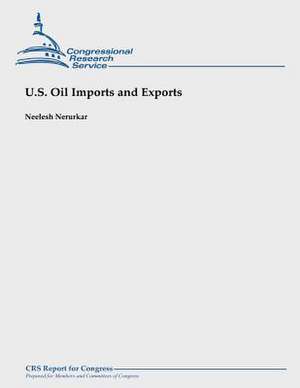U.S. Oil Imports and Exports
Autor Neelesh Nerurkaren Limba Engleză Paperback
Preț: 81.21 lei
Nou
Puncte Express: 122
Preț estimativ în valută:
15.54€ • 16.26$ • 12.91£
15.54€ • 16.26$ • 12.91£
Carte disponibilă
Livrare economică 13-27 martie
Preluare comenzi: 021 569.72.76
Specificații
ISBN-13: 9781490945576
ISBN-10: 1490945571
Pagini: 40
Dimensiuni: 216 x 280 x 2 mm
Greutate: 0.12 kg
Editura: CREATESPACE
ISBN-10: 1490945571
Pagini: 40
Dimensiuni: 216 x 280 x 2 mm
Greutate: 0.12 kg
Editura: CREATESPACE
